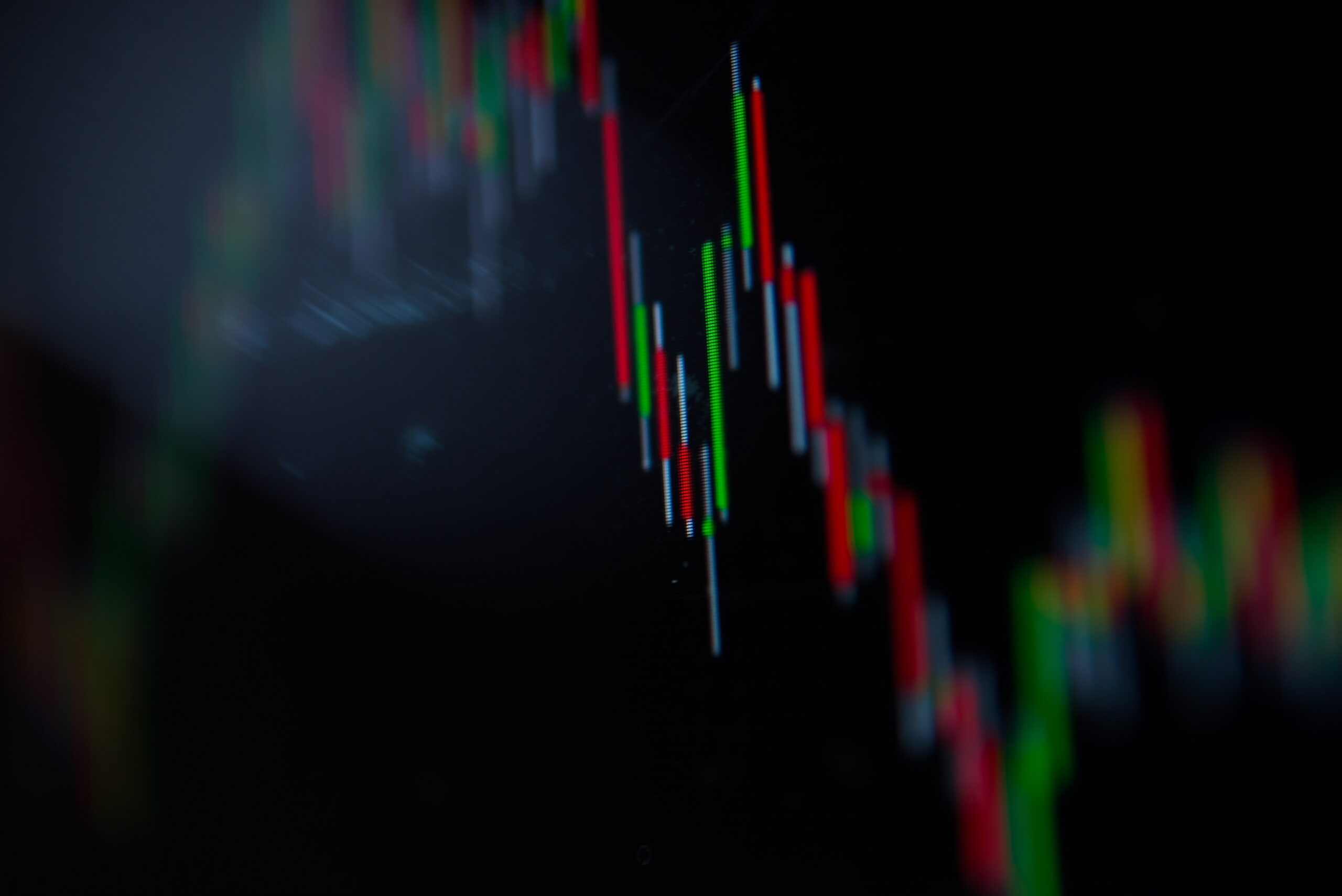The Bitcoin Breakout Level | Navigator
Review Date: March 26th, 2022
We found something interesting on the weekly bitcoin chart. Looking from the bottom of the pandemic crash (March 2020) to the all-time high in 2021, BTC is trying to climb back above the 38% retracement of the entire up move. That level is $45,276. In our experience, the 38% retracement level can be an important metric for the strength of a trend. If BTC can rise above
$45,276, the uptrend could continue, and BTC could rally to either $47,000 or $52,000. Conversely, if bitcoin stalls at $45,276, you could conclude that rising interest and inflation concerns may hurt risk assets and crypto.
Source: Symbolik
Data as of 3/26/2022 – Past performance not indicative of future returns
Bottom Line: Investors may be hesitant to buy above $44,000. That is logical as BTC has been in a dull range for almost nine weeks. There is an old saying that he who hesitates is lost. If BTC pushes through $45,276, BTC could make a rapid move and go higher than people currently expect.
Nigeria Crypto Ban
Crypto is perhaps the most important in countries with oppressive governments because it allows activists access to a financial system even if the regime has attempted to freeze their assets. What happens when that regime attempts to ban cryptocurrencies? This is what happened in Nigeria in February 2021.
The Nigerian government noticed an uptick in cryptocurrency use among its citizens in 2020 and 2021. In May 2020, Nigerians received $2.4 billion in crypto, up from $648 million just a few months earlier.
Nigeria seemed a natural place for crypto to prosper, as it is ripe with foreign exchange traders and a young population. Add onto that the fact the Nigerian naira has lost 30% of its value versus the dollar in the last five years, and most would expect crypto to be prominent in the country.
However, in October of 2020, as many in the country were protesting against rampant police brutality, the draconian government regime saw firsthand the power of cryptocurrency.
An activist collective named Feminist Coalition began raising funds in Bitcoin after the government froze their bank accounts. Jack Dorsey, the co-founder of Twitter and Block, got a hold of the campaign and shared it on his Twitter, leading to donations of over $150,000 for the organization (Nigeria banned Twitter shortly after this).
In February, a fear of the weakening naira accompanied by the negative press brought by FemCo’s Bitcoin campaign, the government told banks to close the accounts of any person or entity making transactions in crypto.
As is the case when most countries ban crypto, the ban had the opposite effect of limiting the use of crypto. One trading platform, LocalBitcoins, experienced 50% more trades in the first five months of 2021 than in the same period the previous year.
Politicians in the country appear to be split on how to handle cryptocurrencies. On the one hand, the Central Bank of Nigeria banned their use, on the other hand, the nation’s Vice-President called for a robust, thoughtful, and knowledge-based regulation as opposed to acting with fear.
Bottom Line: Crypto adoption is taking root globally, and totalitarian regimes won’t like the freedom it grants their citizens. We’ve seen this in China, Iraq, Nigeria, and more countries that feel threatened by the power of crypto. As crypto natives know, a ban on the ecosystem is impossible, and commonly the news causes wider spread adoption. As for Nigeria, we will see if the ban remains intact or if they take the words of the Vice President and seek reasonable regulation.
Crypto Doing More Harm than Good in the European Conflict
Crypto opponents love to argue that only criminals and low lives use crypto for economic purposes. Additionally, these people will say that crypto could easily be used by any person, entity, or government recently sanctioned by a larger body. If this were the case, Russian money would have flooded into crypto after recent global sanctions.
Nonetheless, there has been little evidence of Putin’s inner circle of oligarchs running to crypto to hide their wealth. This fact is a bit contrary to the libertarian, anti-government ideals upon which Bitcoin was created. OG Bitcoiners would likely expect oligarchs to be stashing their money in the blockchain.
Even more surprising is that crypto exchanges and companies are rushing in to help governments ensure the sanctions hold up. The widespread use of KYC across the industry has assisted these companies in identifying the nationality of their users.
Coinbase has frozen 25,000 Russian accounts, and Binance pledged to do the same to their sanctioned users.
Crypto is not only assisting governments in bleeding out the Russian economy, but it is also solving a problem that humanity has faced for decades — getting money into a warzone. In the past, crates of $100 bills had to get sent into battlefields; Ukraine today has accepted over $30 million in crypto donations and spent about 20% of its supply budget using crypto directly.
Bottom Line: The ongoing conflict in Europe is a time for crypto to show both its strengths and its weaknesses; as of now, the crypto space is proving to be valuable in a time of crisis.
NFT LA: First-ever Inaugural NFT Conference in Los Angeles
From March 28th to March 31st, 2022, thousands will be gathering at the Los Angeles Convention Center to share their love of NFTs. NFTLA, as the name suggests, is an IRL NFT conference set in Downtown Los Angeles. Over the four days of the conference, there will be panels featuring over 250 NFT and Web3 pioneers such as Mark Cuban, Steve Aoki, Yat Siu, Nicole Buffett, Neil Strauss, and more.
Participants have three options for experiencing this conference (General Admission and VIP are sold out):
- $19.95 – NFTLA Online + Meta Pass gives access to 20+ Keynotes & Panel shows, a live performance, and exclusive access to NFTLA Meta.
- $400 – General Admission gives full access to all the talks and sessions, performance and events, and to NFTLA Parties.
- $3,000 – VIP gives access to everything from General Admission plus access to exclusive insider parties, VIP events, a private lounge, and facilitated networking intros.
NFTLA has three aspects: IRL, Night, and Meta. The IRL aspect is the core conference event designed to spark attendees’ curiosity with high-level talks, performances, announcements, educational breakouts, and NFT galleries and auctions. The Night aspect is many people’s favorite – going out to clubs and sharing a drink with friends while talking NFTs. As listed in the agenda, after every day of events, there are “Late After Parties Off Site.” Lastly, for those who cannot make the event in person, NFTLA created the NFTLA Meta, a metaverse where online users can experience all the speakers, events, and nightlife DJs in the comfort of their own home.
Token Metrics’s very own Bill Noble and Jacob Koch-Gallup will be attending the conference, so make sure to stay tuned to our YouTube channel to see videos from NFTLA.
Token Highlighted by Token Metrics
NFTY Network ($NFTY) is a cross-chain authentication layer for Web3 applications. It uses NFTs and fungible assets (tokens/coins) as a way to authenticate users for subscription services, loyalty rewards, and access management. Their mission is to develop bridges between the various NFT/Metaverse communities and help facilitate NFT utility across different L1s and L2s. NFTY Network is currently on Ethereum, Binance Smart Chain, and Polygon. $NFTY is the utility and governance token of the protocol.
$NFTY is sitting at a $32 million market cap with a FDV of $183 million. It has seen substantial returns (216% in the last 30 days). You can learn more about NFTY Network here: https://nftynetwork.io/ and https://app.tokenmetrics.com/nfty-token .
Maple ($MPL) is an institutional capital marketplace. In simple terms, it is a borrowing and lending protocol that provides on-chain undercollateralized loans to institutions. Users can deposit their crypto assets and earn yield (between 3.7% and 18.5% depending on the token). There are currently 6 active pools that offer lending and borrowing in wETH and USDC. $MPL is the governance token of the protocol that also allows users to earn fee revenue and stake insurance to liquidity pools. $MPL is currently at a $176 million market cap with a FDV of just under $400 million. It has increased in price by roughly 52% in the last 7 days. You can learn more about Maple here: https://maple.finance/ and https://app.tokenmetrics.com/maple .
Ethereum Classic ($ETC) is a hard fork of the Ethereum blockchain that was launched in 2016 after “The DAO” was hacked for 3.6 million ETH (approximately $50 million at the time of the hack). Subsequently, the Ethereum blockchain was split into two parts: Ethereum, where The DAO hack was erased from the blockchain history, and Ethereum Classic, where the blockchain history was left unaltered with the argument that “code is law”. In terms of functionality, both blockchains are the same, they differ mostly in ethos and valuation. $ETC is currently at approximately $6.5 billion market cap with a FDV of $10.2 billion. Its price has increased roughly 71% in the last 7 days. You can learn more about Ethereum Classic here: https://ethereumclassic.org/ and https://app.tokenmetrics.com/ethereum-classic .
Origin Protocol ($OGN) is an Ethereum-powered platform that aims to bring NFTs and DeFi. The platform is broken down into multiple components: Origin Story, an NFT marketplace that gives sellers more control over their storefront and terms of sales, and OUSD, the first stable coin that allows users to earn yield without needing to stake or lend their tokens. $OGN is the governance token of the protocol and allows token holders to earn fees from NFT sales. The market cap is currently $235 million with a FDV of $606 million. The price has increased roughly 130% in the past 14 days. You can learn more about Origin Protocol here: https://www.originprotocol.com/en/ and https://app.tokenmetrics.com/origin-protocol .
Lido DAO ($LDO) is a DAO that governs Lido, a liquid staking solutions protocol for Ethereum 2.0. Users can stake their Ethereum, Terra, Solana, Kusama, and Polygon without losing access to their funds. $LDO is the governance token of the protocol. The market cap is $381 million with a FDV of $3.67 billion. The total value locked by the protocol is $16.78 billion. You can learn more about the Lido here: https://lido.fi/ and https://app.tokenmetrics.com/lido-dao .
ICHI ($ICHI) is a protocol that allows communities to create their own stable coins. Users can create a branded stable coin that is backed 1:1 with USDC. So far, ICHI has created stable coins for 9 communities including 1inch and Filecoin. Users can stake their $ICHI tokens for governance rights and staking rewards. The current market cap is $278 million with a FDV of $309 million. The token has increased just under 160% in the last 7 days.
You can learn more about ICHI here: https://www.ichi.org/ and https://app.tokenmetrics.com/ichi-farm .
TM Grade Performance
The TM Grade was able to identify momentum plays that played out well over the past week. In fact, the table below shows a few examples of top-rated coins on Friday, March 18th, and how they performed up to today, Friday, March 25th.
| Token Name | TM Grade as of the 18th | ROI |
| ICHI | 88 | + 168% |
| NFTY Token | 87 | + 84% |
| Maple | 90 | + 63% |
| SingularityDAO | 80 | + 64% |
| Adshares | 90 | + 46% |
The graphs below show the token price in red vs. the Token Metrics grade in blue.
Figure 1: ICHI (red) vs. Token Metrics grade (blue)
Data as of 3/25/2022 – Past performance not indicative of future returns
Figure 2: NIFTY (red) vs. Token Metrics grade (blue)
Data as of 3/25/2022 – Past performance not indicative of future returns
Figure 3: SDAO (red) vs. Token Metrics grade (blue)




